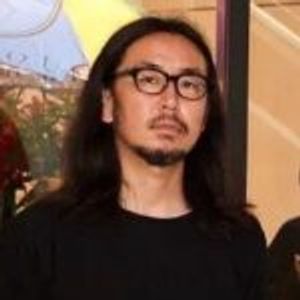Brian Eno’s exhibition “BRIAN ENO AMBIENT KYOTO” is currently being held at the former welfare centre of the Kyoto Chuo Shinkin Bank. The exhibition will be open until August 21. In conjunction with the exhibition, Brian Eno’s official store “ENOSHOP,” where his works and merchandises can be purchased, is open for a limited time at Daikanyama Tsutaya in Tokyo until July 14, as well as at the exhibition venue in Kyoto.
Along with his musical practices, Eno has been incorporating “generative music” techniques into his visual creations. He has continued to expand the realm of art by advocating the notion of “generative art,” a spatial art form in which sound and light are synchronized and continuously change without interruption. He has shown his installations and held exhibitions in a variety of locations around the world, including at the Venice Biennale. This exhibition is Eno’s first large-scale exhibition in the world to be held after the outbreak of COVID-19 pandemic.
The entire building of 92-year-old former welfare center of the Kyoto Chuo Shinkin Bank is used for the exhibition, with works displayed on the first through third floors. In addition to three of Eno’s representative works, 77 Million Paintings, The Ship, and Light Boxes, the exhibition includes his new work, Face to Face, which is shown for the first time in the world, and The Lighthouse which can be experienced through the sounds from Sonos speakers placed throughout the venue including hallways, stairways, and restrooms.
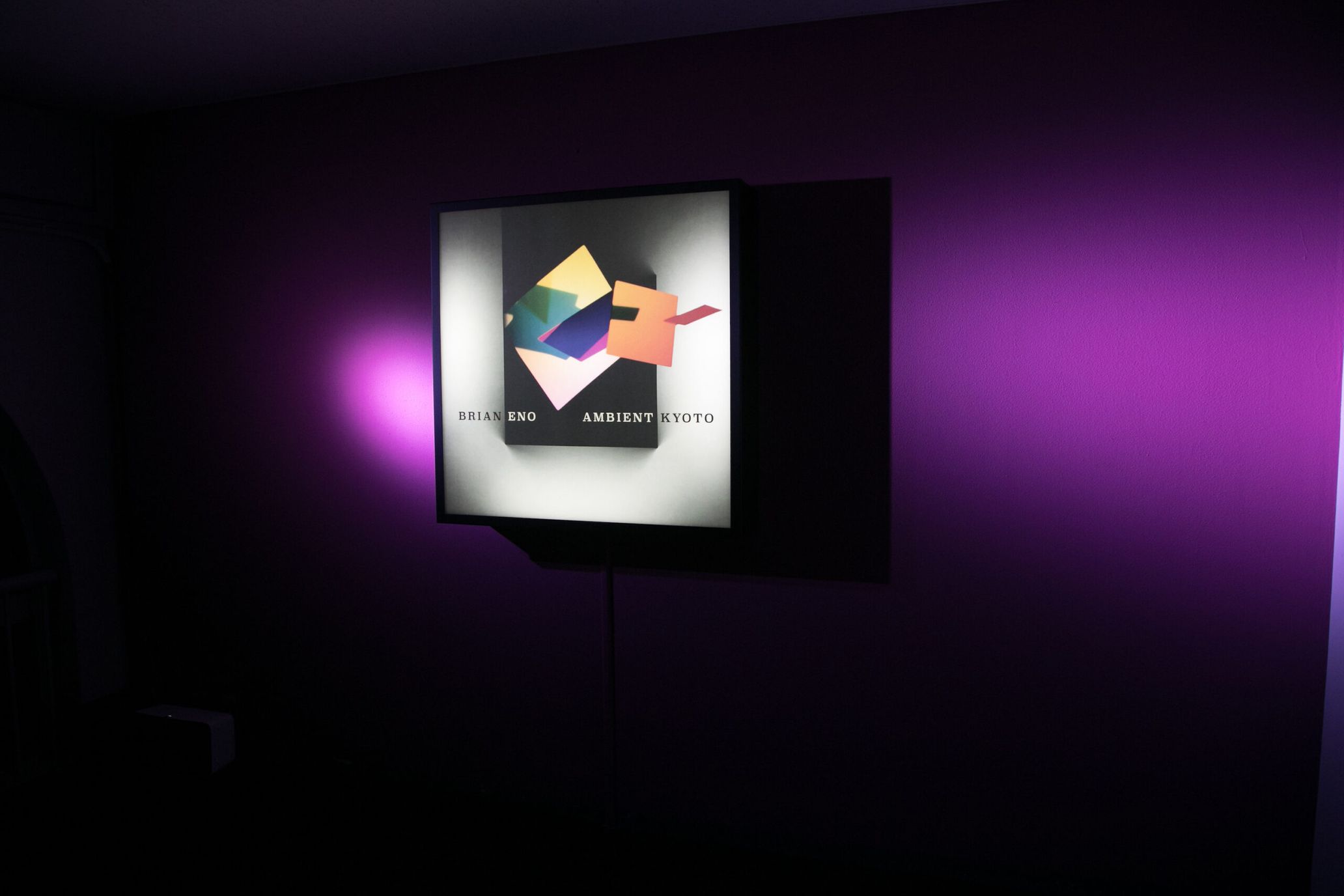
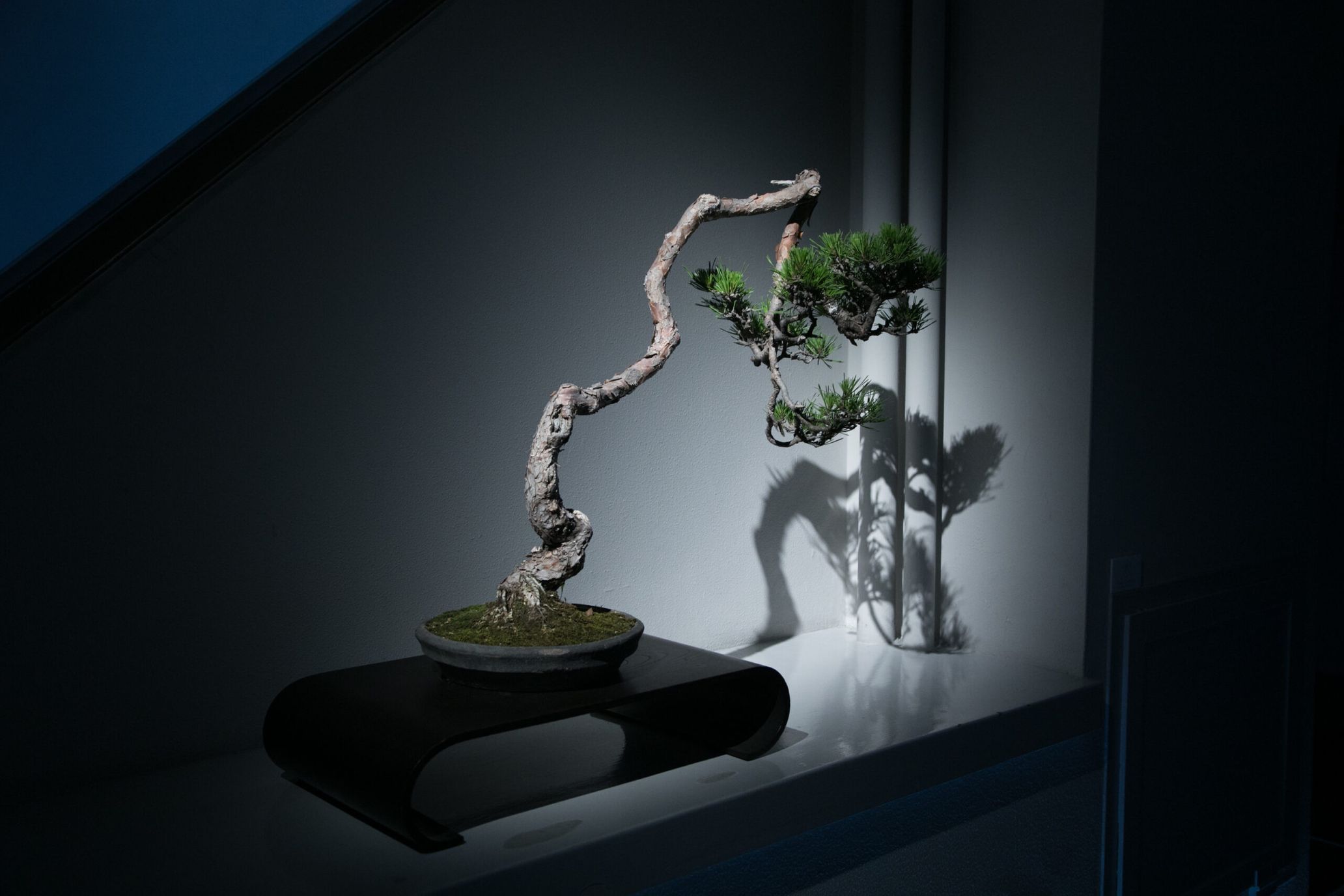
On the first floor is the ENOSHOP where visitors can purchase Eno’s artworks and merchandises, and in the corridors and staircases are bonsai trees and stones cultivated and selected by Hitomi Kawasaki, a Kyoto-based bonsai researcher.
“By allowing ourselves to let go of the world of which we have to be a part every day, and to surrender to another kind of world, we’re freeing We’re freeing ourselves to allow our imaginations to be inspired.”
This message is what the concept of the exhibition is all about. The following is a brief introduction to each of the exhibits.
1.77 Million Paintings
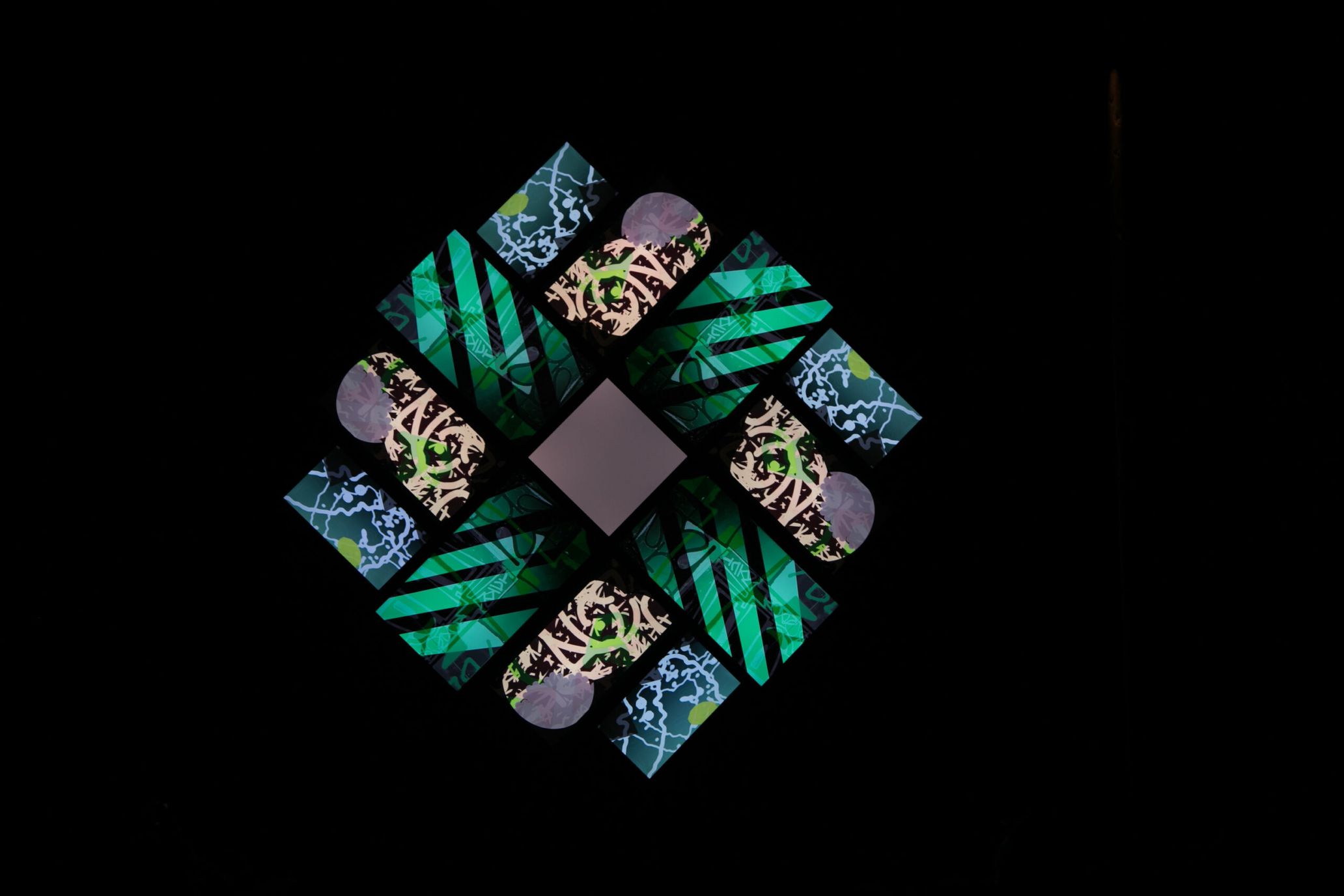
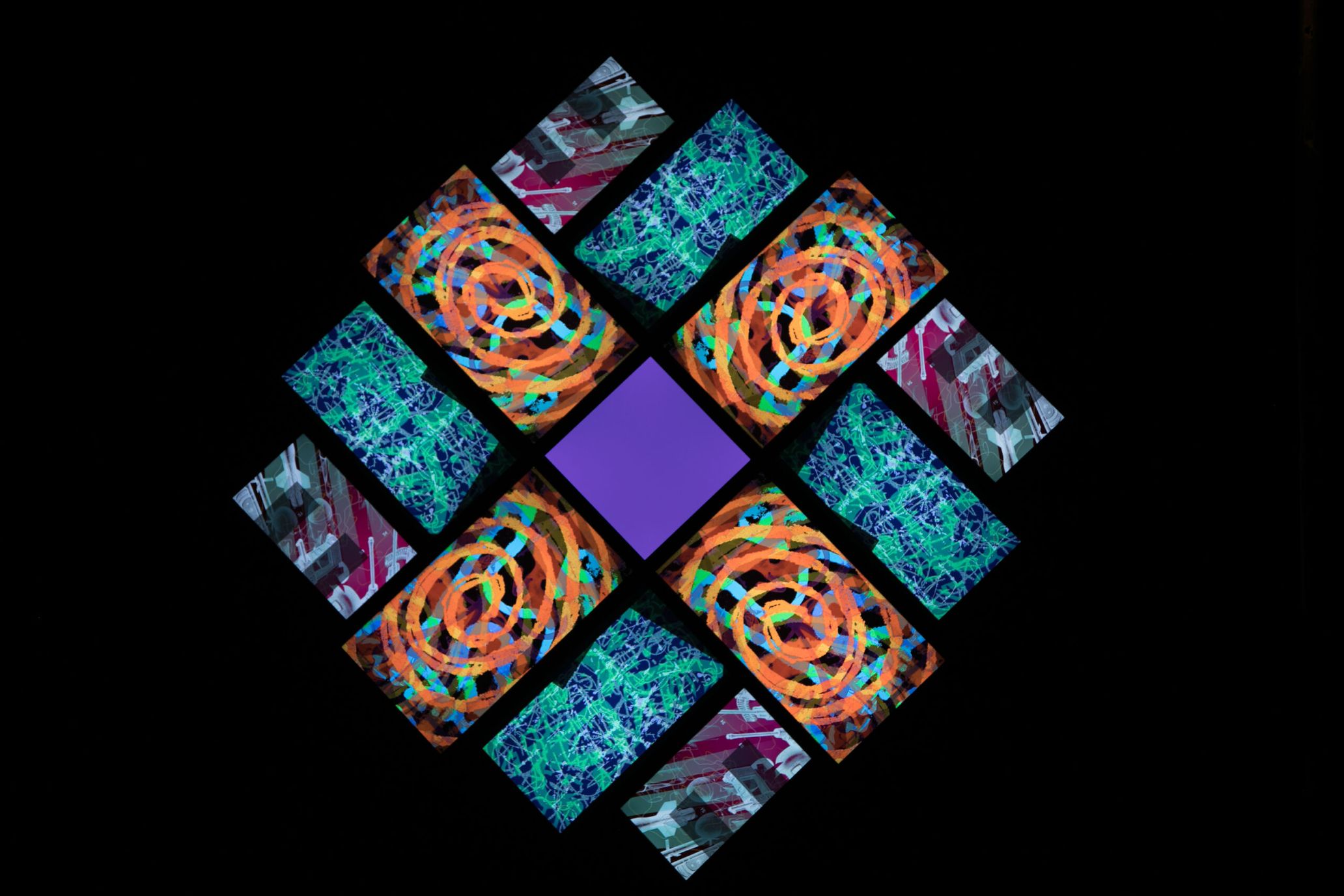
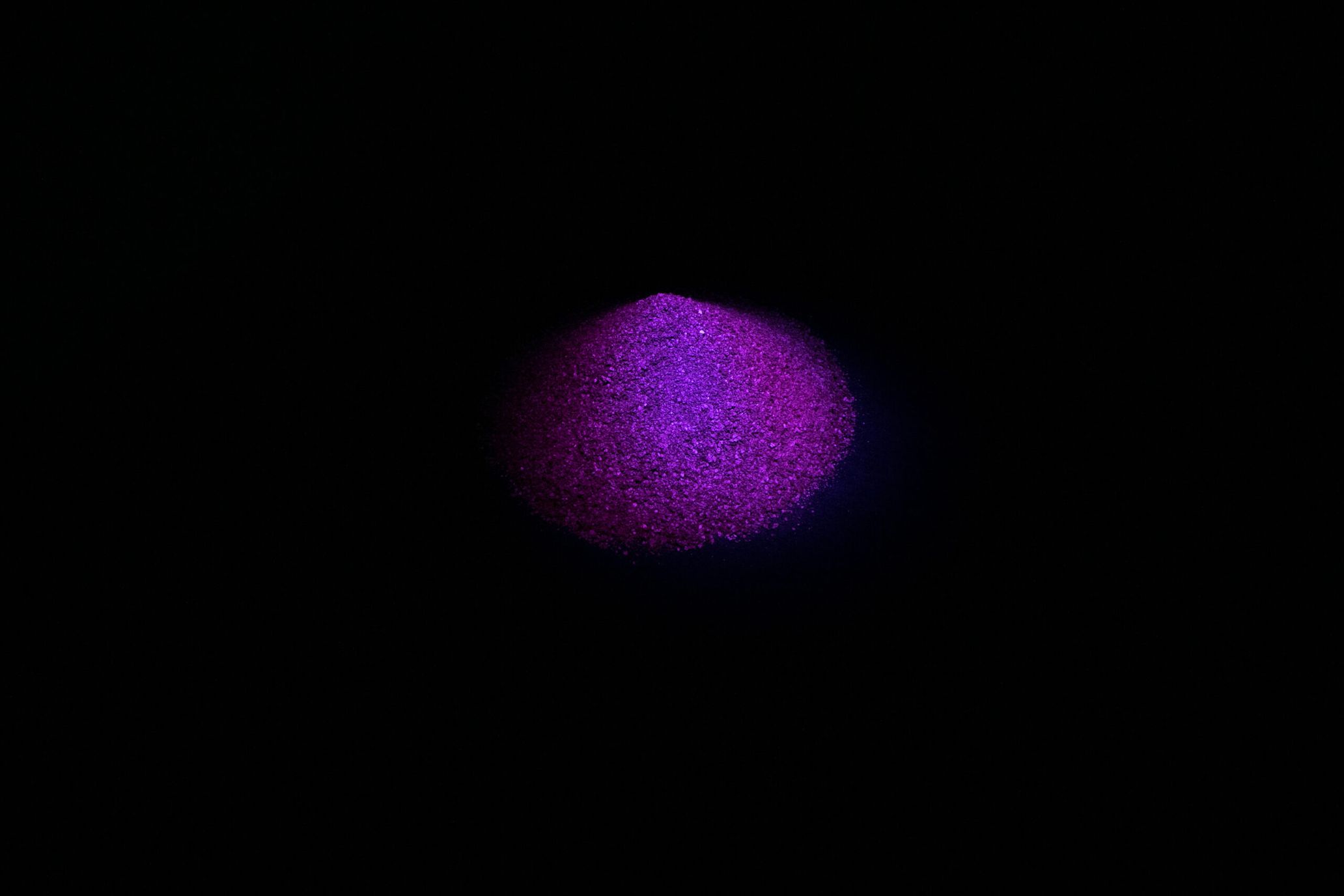
77 Million Paintings, the largest of the exhibits, is an installation that synchronizes continually generated and changing lights and sounds. The number “77 Million” in the title refers to the number of visual combinations this system can produce Since its world premiere at Laforet Museum Harajuku in 2006, the work has been repeatedly updated and exhibited 47 times around the world before being shown in Japan for the first time in 16 years.
The room is set up with several wooden pillars and a conical pile of sand, and four different images projected on the central screen slowly and continuously change with the passage of time, in response to the trembling, echoing music. Viewers can experience the vast number of automatically generated visuals and sounds with their entire bodies as they lean back on sofas.
2.The Ship

The Ship is the culmination of Eno’s music and installation efforts. The music that played in the space is “The Ship,” released in 2016, and “The Sinking Of The Titanic” by Gavin Bryars, produced by Eno in 1975 and released on his own label, Obscure Records.
The Ship does not deal squarely with the sinking of the Titanic. Rather, it connects the sinking of the Titanic with World War I and takes human arrogance and paranoia as its conceptual starting point.
A dimly lit audio set is placed in a dark space which is dotted with various speakers surrounded by sofas. Various sounds intermingle, including the sounds of the ocean, human voices, and church bells, and viewers can either listen to the sounds or walk around and feel the changes in the texture of the sounds. Walking toward the objects placed at the back of the room, there are moments of silence, allowing viewers to enjoy a variety of acoustic experiences depending on how they move and where they are positioned. The curated playlist, which climaxes with the Velvet Underground cover “I’m Set Free,” is also exceptional.
3. Face to Face

On the same third floor as The Ship, visitors can view Face to Face shown for the first time in the world. The starting point for this work was a single photographic image that is made up of 21 portraits of real-life figures. With special software, it changes and syntheses the portraits constantly. As the face of one person slowly changes pixel by pixel into the face of another, a chain of nonexistent people with a robotic texture appear. The work is capable of creating 30 new faces per a second, resulting in more than 36,000 new faces in total. Interestingly, it includes Eno’s own youthful and recent faces.
4. Light Boxes


Light Boxes is a fantastical work in which three light-emitting boxes change color at an exquisite speed. Three translucent boxes emit light using LED technology, and the light emitted from them continues to change slowly in parts over time.
The changing colors, synchronized with music, shine brightly yet gently. The changing combination of lights allows viewers to see the work in different ways, even if they are viewing it from the same place, and to discover its individual meanings.
5. The Lighthouse
The Lighthouse, an audio work that is shown for the first time in Japan, seamlessly connects the entrance of the venue, the exhibition spaces of Light Boxes and Face to Face, and even the restrooms.
The Lighthouse is about an archive channel that can only be heard on Sonos Radio HD, a streaming radio service that Eno has started in 2021. The music from that radio service functions as a musical work that is played in the hallways and restrooms of the venue through Sonos speakers.
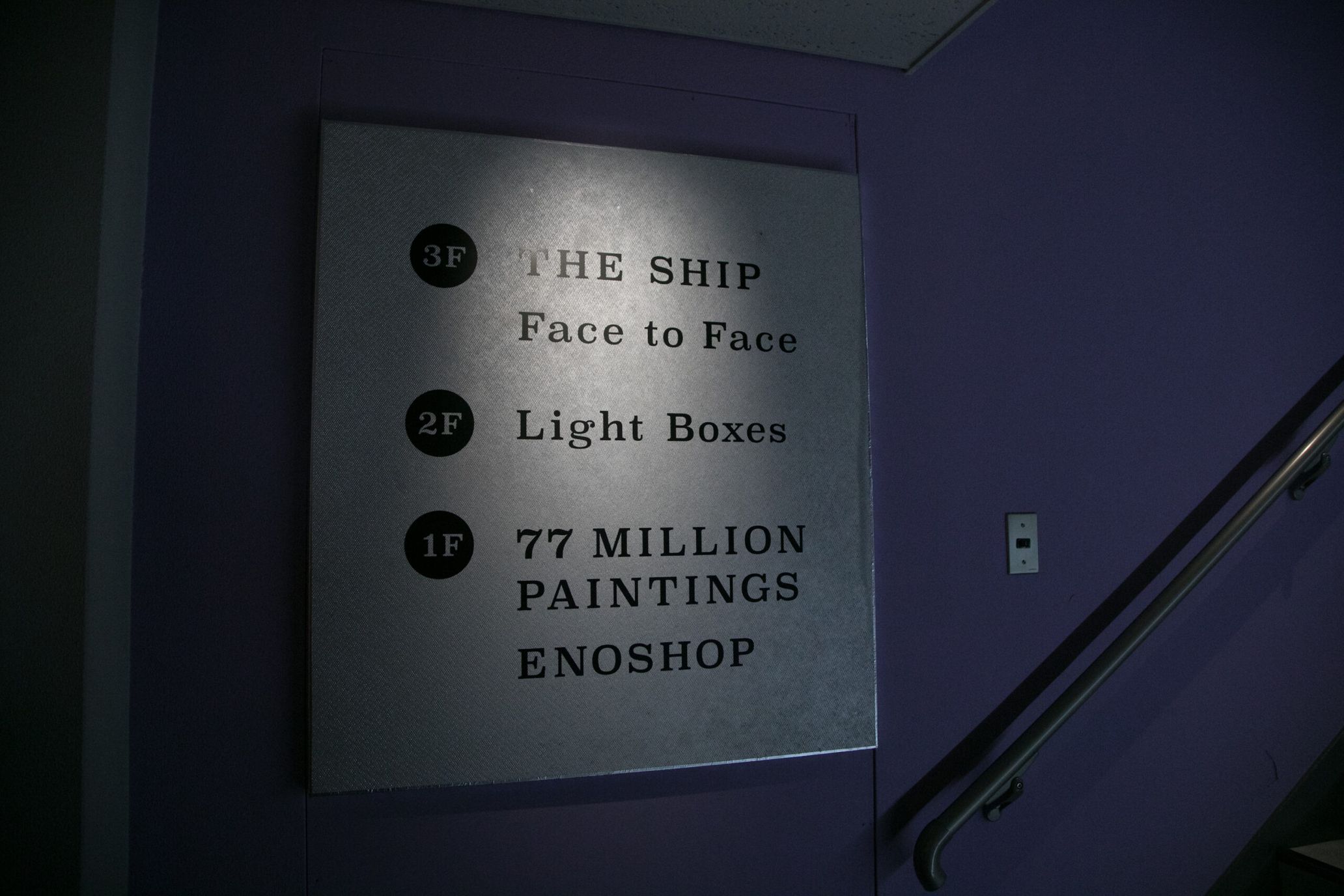
The philosophy of Brian Eno glimpsed through his spatial art
This exhibition, which brings together his masterpieces and new works on view for the first time in Japan, is a highly receptive space that did not limit the viewer’s involvement with Eno’s works. The exhibition spaces, where sound and light are constantly changing and synchronized, were filled with the sound experiences that can only be felt at that moment, and of ingenuities that resonate with the thoughts and feelings of each viewer. If you read Eno’s message at the entrance after viewing the exhibition, you may feel that you have understood a part of it. In the lounge, there is a notebook where you can write your message to Eno, so why don’t you write your thoughts about this special viewing experience?
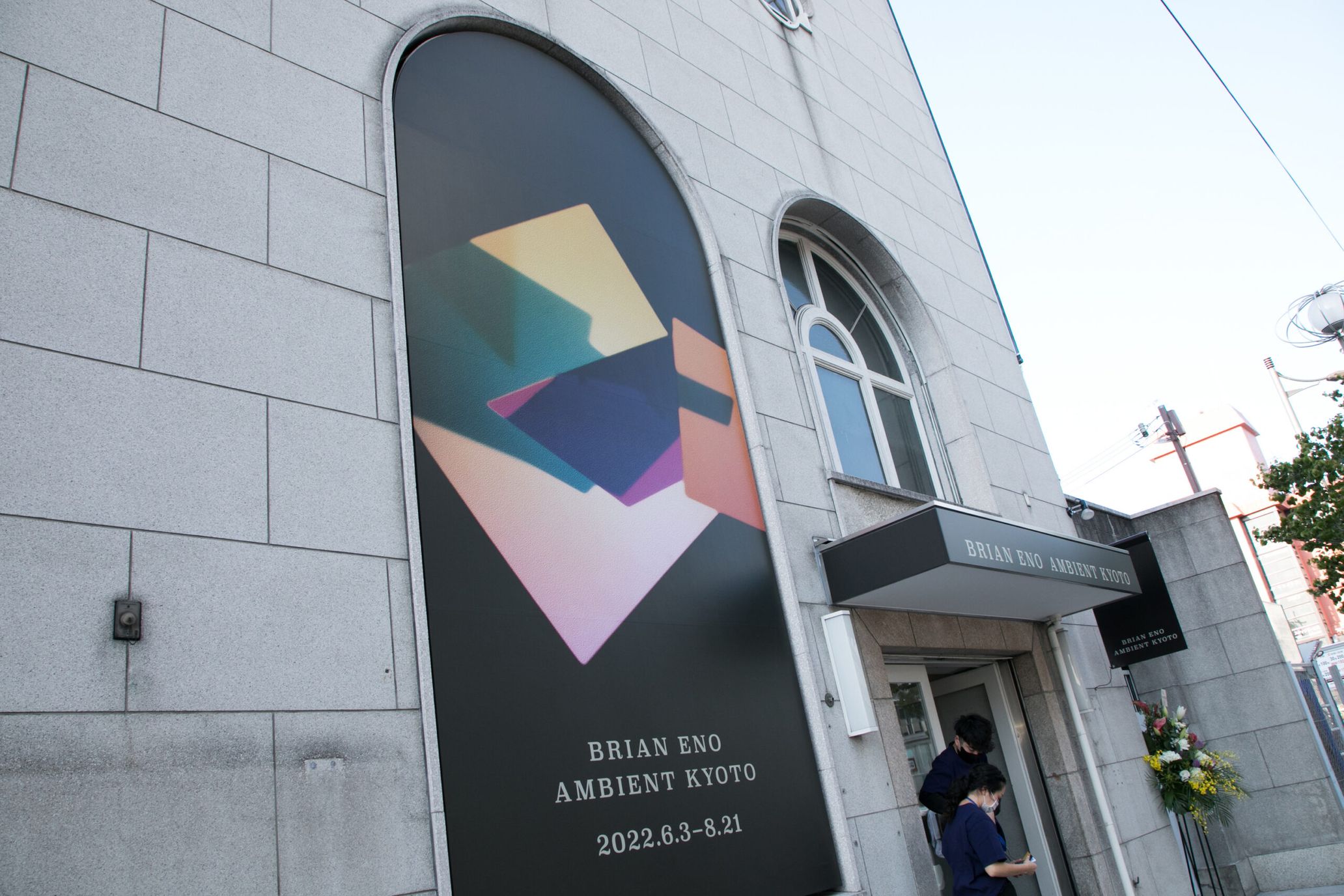
■BRIAN ENO AMBIENT KYOTO
Dates: Open until August 21
Venue: Former Welfare Center, Kyoto Chuo Shinkin Bank
Address: 113 Karasuma Nishiiru, Shichijo-dori, Nakai-cho, Shimogyo-ku, Kyoto City
Hours: 11:00 – 21:00 (Admission until 30 minutes before closing)
Admission: Weekdays: ¥2,000 for adults, ¥1,500 for college and university students, ¥1,000 for junior high and high school students
Weekends and holidays: ¥2,200 for adults, ¥1,700 for college/university students, ¥1,200 for junior high and high school students
Ticket purchase site: https://www.e-tix.jp/ambientkyoto/
*Pre-ordered tickets are recommended, as same-day tickets may be sold out on the day of your visit.
*Up-to-date information on congestion will be posted on the official SNS.
Official website:https://ambientkyoto.com
Twitter:@ambientkyoto
Instagram:@ambientkyoto
Facebook:@ambientkyoto
Photography Mayumi Hosokura

